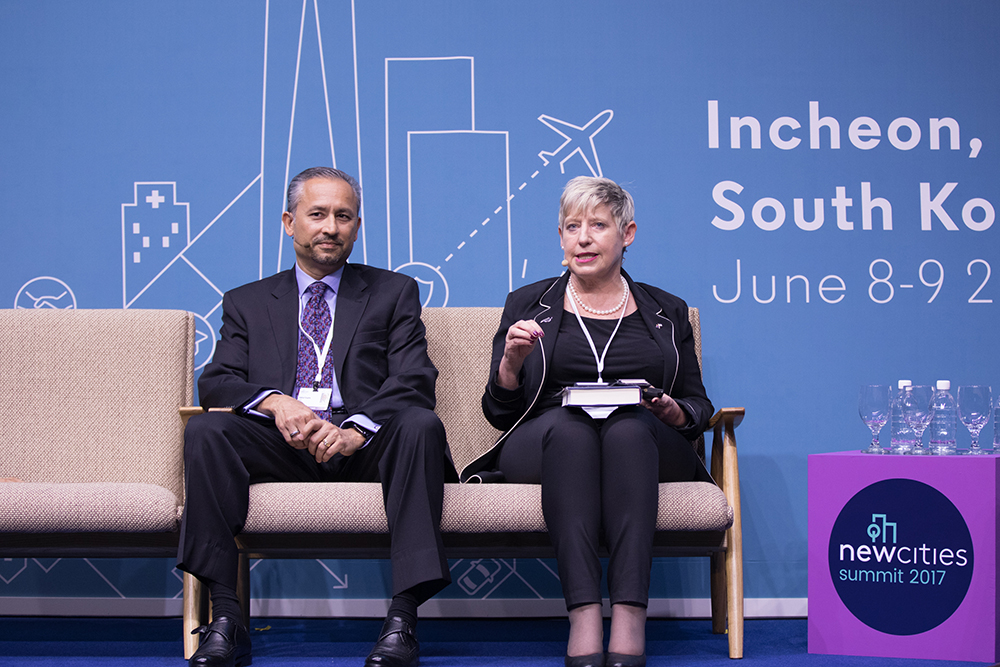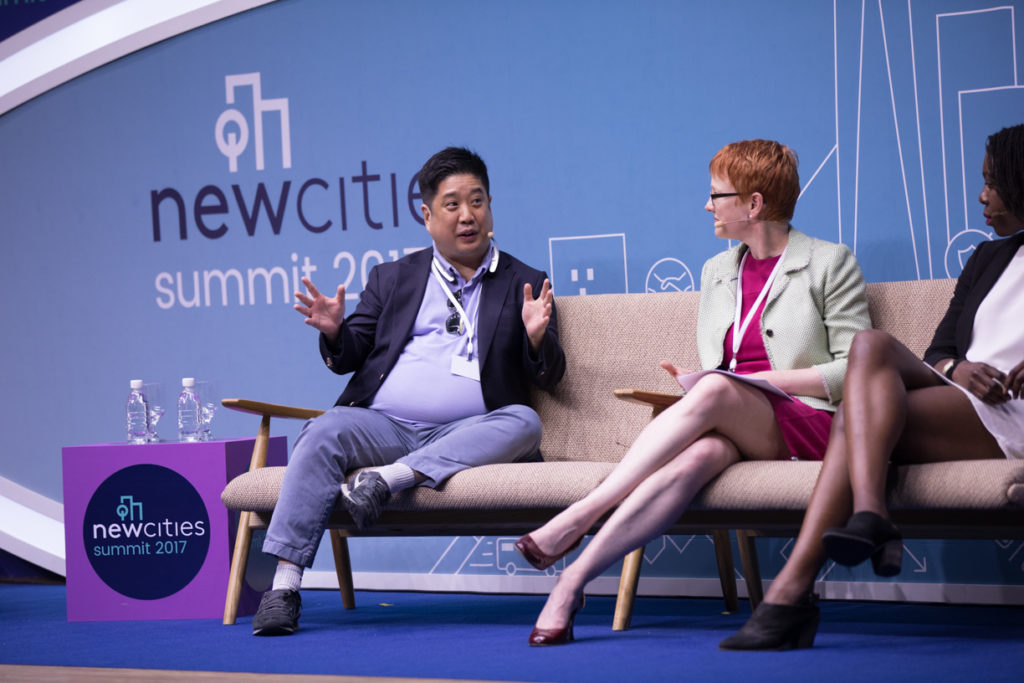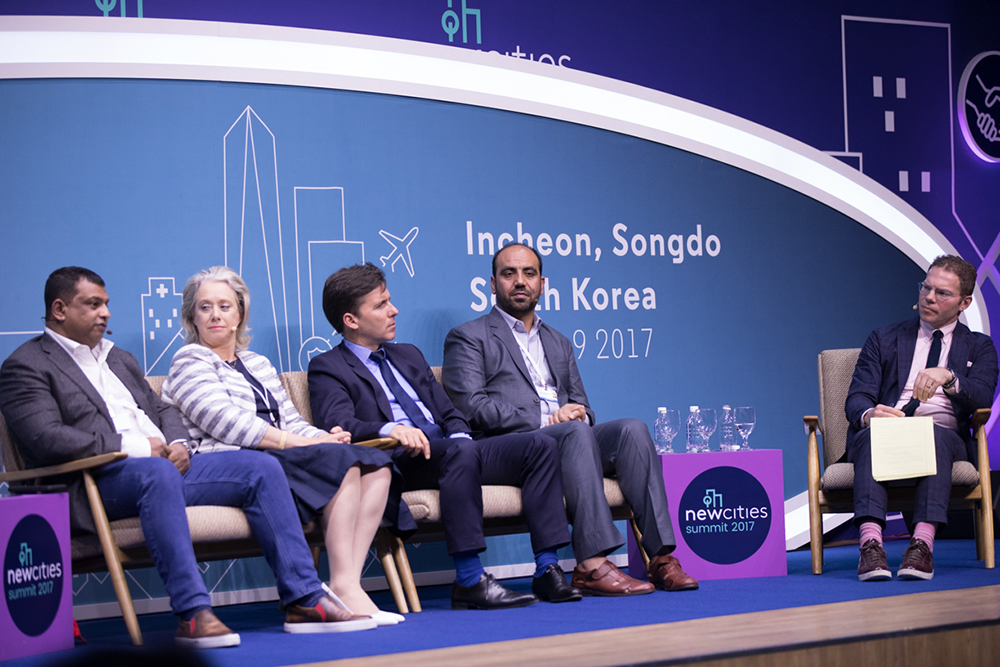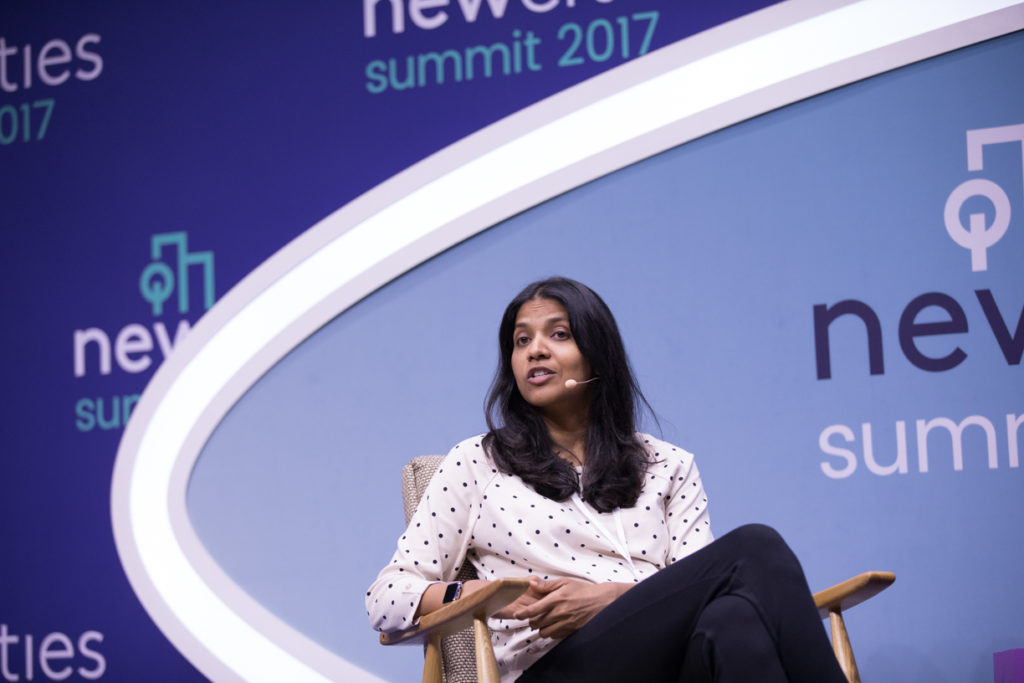Risks and Rewards for Cities Big and Small
June 16, 2017 — Blog
Northeast Asia has a new smart and green city at its crossroads: Songdo, South Korea. At the heart of Songdo is its International Business District, globally recognized as the world’s foremost sustainable city-scale development and the host of the NewCities Summit 2017.
Songdo has become the first city in the world to receive pre-certification from the United States Green Building Council’s new LEED for Communities Program. Commissioner of the Incheon Free Economic Zone (IFEZ), Young-geun Lee, accepted the award on the third day of the Summit as hundreds of urban experts and business leaders watched on at Songdo’s ConvensiA Convention Centre — fittingly, the first LEED-certified exhibit hall in Asia.
Here are some of the other highlights from the final day of the NewCities Summit 2017.
Small Cities, Big players
City governments and public service providers must be able to efficiently meet the ever-changing needs of their citizens, whether it is a sudden phenomenon or a gradual trend. How can adaptability and resilience be built into traditional city services?

Lianne Dalziel, Mayor of Christchurch, New Zealand threw light on how resilience came from its small population following the devastating earthquakes that hit her city in 2010 and 2011: “Christchurch is small enough to fail but good enough to succeed,” she said.

Mid-sized cities, as well as greenfield cities, can also be experimental in their urban services and processes. Jimmy Kim, President of N3N and Co-founder and Partner at Sparklabs spoke about the freedoms of non-megacities and how this served the success of his startup in Songdo. “Usually big cities have a lot of so-called legacy issues,” he said.

Policymakers must also ensure small communities are connected globally. Anthony Fernandes, CEO of AirAsia, seeks to stimulate mid-sized cities by adding them to his international flight network. “We have over 200 aircraft at AirAsia and what is important is that a lot of them reach secondary and tertiary cities in the continent,” he said.
Mr. Fernandes and Elisabeth Le Masson, Delegate for Economic promotion and Jobs Creation at Aéroports de Paris, led the discussion on urban connectivity by air while ENGIE’s Olivier Biancarelli discussed urban connectivity through energy services. Roshaan Wolusmal, Mayor of Kandahar, contextualized this discussion in Afghanistan, where the new Silk Road project opens new possibilities for connectivity. “There is no real magic number,” Mr. Fernandes added, “any connectivity is good.”
Healthy Must Rhyme with Inclusivity
Thriving cities must include all types of citizens into all domains of the city. Archana Vemulapalli, Chief Technology Officer of the city of Washington D.C., emphasized inclusivity as a cardinal value for cities: “This is an issue that is timely but also timeless.” Public spaces are the heart of a city where human interactions, leisure, culture, and arts meet. Animating public spaces requires thinking, planning and collaboration. Vera Baboun, Former Mayor of Bethlehem placed inclusivity in the physical space: “Parks are open spaces and are open to everyone. To make them inclusive is very important.”

John Rossant, NewCities Chairman concluded the sixth edition of the NewCities Summit with a call to build healthy cities for the long-term: “It will require a new way of thinking about cities and development that puts interests of citizens at the forefront of design for all cities around the world.” Here, throughout the Summit, this new way of thinking was catalyzed through debate and discussion between key players in the cities as they return to their home cities around the world and consider ways to make them better both today and in the future.
